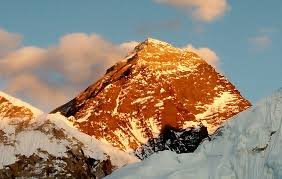Mount Everest Summit: Mount Everest, known as Sagarmatha in Nepal and Chomolungma in Tibet, is the tallest mountain on Earth, standing majestically at 8,848.86 meters (29,031.7 feet) above sea level. Situated in the Himalayas along the Nepal–Tibet border, Everest has long been a symbol of human endurance, courage, and the unyielding desire to conquer nature’s greatest challenges.
The Allure of Mount Everest Summit
For mountaineers across the globe, reaching the Mount Everest Summit is the ultimate achievement. The mountain represents not only physical and mental endurance but also a spiritual journey. Thousands of climbers attempt to scale its icy slopes every year, driven by dreams of standing atop the world’s highest point and witnessing the breathtaking panorama of the Himalayas.
A Brief History of Everest Expeditions
Mount Everest’s appeal grew after it was officially recognized as the world’s tallest mountain in 1856. The first successful ascent was achieved on May 29, 1953, by Sir Edmund Hillary of New Zealand and Tenzing Norgay Sherpa of Nepal, marking one of the greatest milestones in mountaineering history. Since then, thousands of climbers, both professionals and amateurs, have reached its summit, though many have also faced tragic ends due to the extreme challenges the mountain presents.
The Challenges of Climbing Everest
Climbing Mount Everest is not a simple feat—it requires months of preparation, training, and acclimatization. Climbers must endure extreme weather, unpredictable avalanches, and the thin oxygen levels in the infamous “death zone” above 8,000 meters. Frostbite, altitude sickness, and exhaustion are constant threats. Despite advanced gear and improved climbing routes, the mountain continues to test even the most experienced climbers.

Routes to the Summit
There are two main routes to Everest’s summit:
- The South Col Route (Nepal): The most popular route, starting from the base camp in Nepal, passing through the Khumbu Icefall and the Hillary Step before reaching the summit.
- The North Col Route (Tibet): A slightly less crowded but more technically demanding path that begins in Tibet.
Both routes require climbers to pass through multiple camps for acclimatization and safety before the final push to the summit.
The Spirit of the Sherpas
The Sherpas of Nepal play a vital role in Everest expeditions. Known for their unmatched resilience, climbing skills, and knowledge of the mountains, they assist climbers by carrying supplies, fixing ropes, and guiding them safely to the top. Their contribution has been crucial in making Everest ascents possible for mountaineers worldwide.
A Symbol of Human Determination
Mount Everest is not just the highest peak of the world; it is a symbol of human spirit, resilience, and determination. Every climber who dares to step onto its icy slopes carries with them the dream of overcoming challenges and pushing the limits of possibility. Whether or not they reach the summit, the journey itself becomes a testament to courage.
Mount Everest, the highest peak of the world, remains an awe-inspiring wonder and a dream destination for adventurers. From its glorious history to the immense challenges it poses, Everest continues to remind us of the strength of the human will. Standing at its summit is more than just a physical accomplishment—it is the fulfillment of a dream to reach the top of the world.
Char Dham by Adi Shankaracharya
Top Tourist Places in Australia You Must Visit
Highest Peak of Himalayan Range – Mount Everest
Tours And Travels Website Design
![]()





